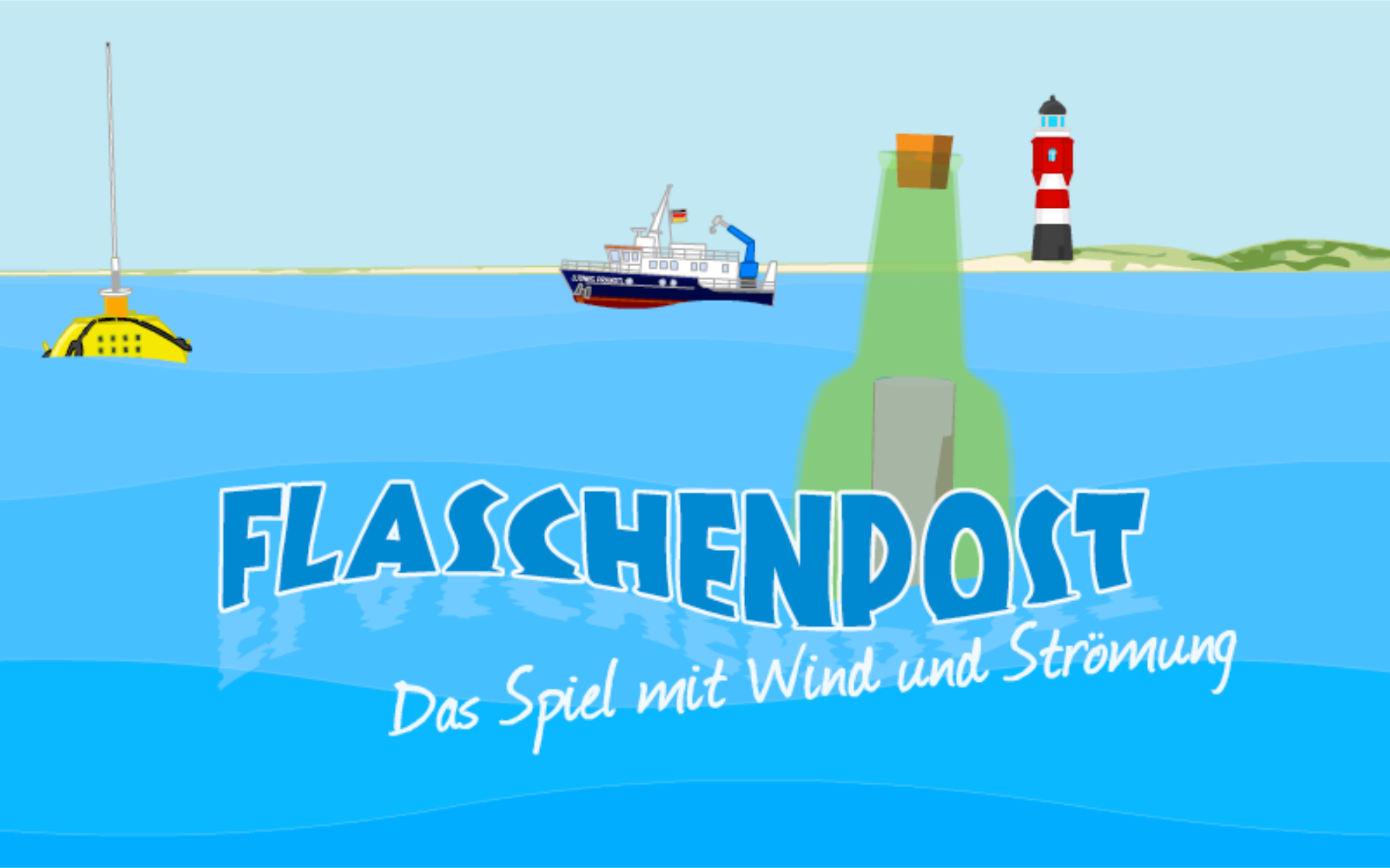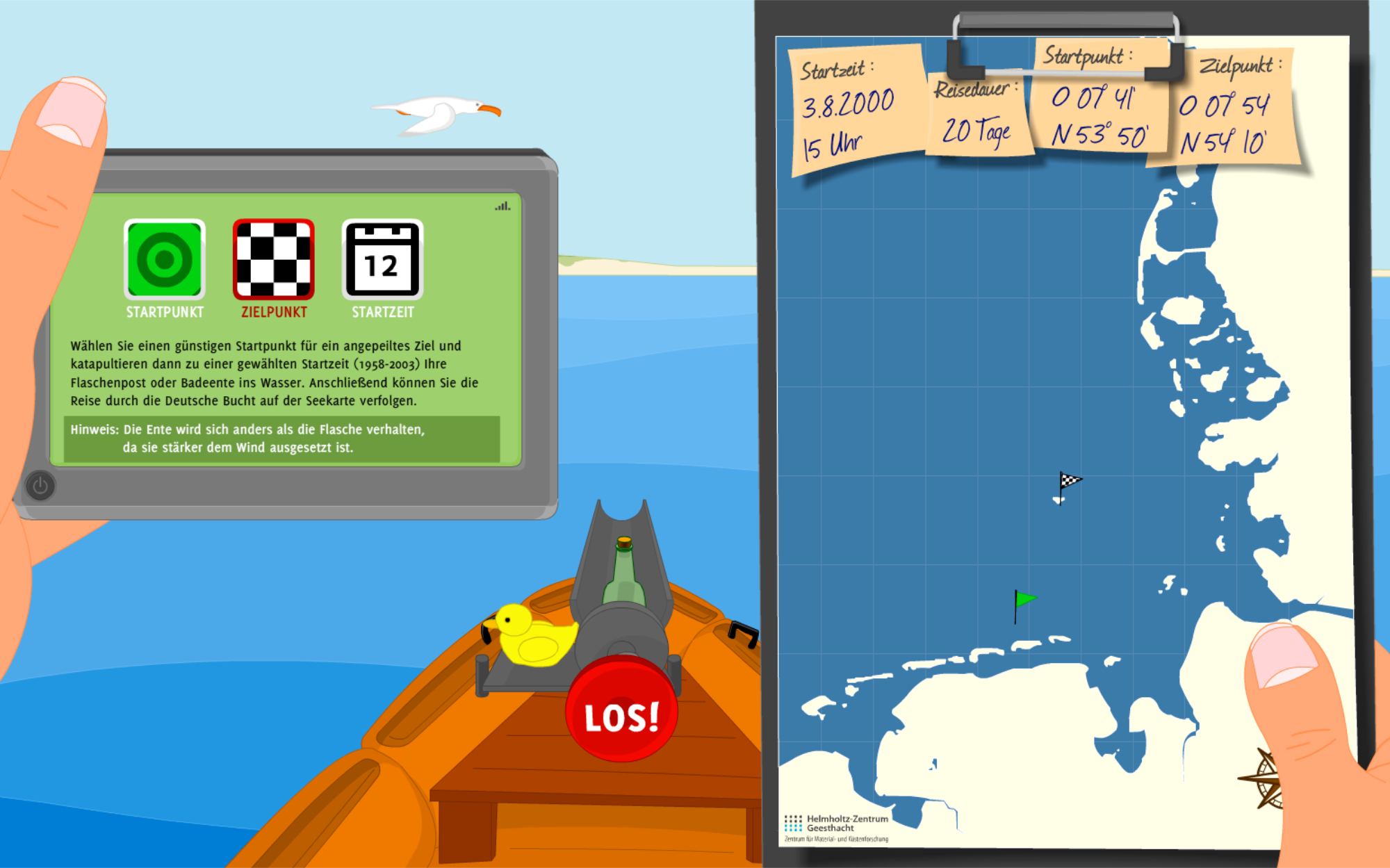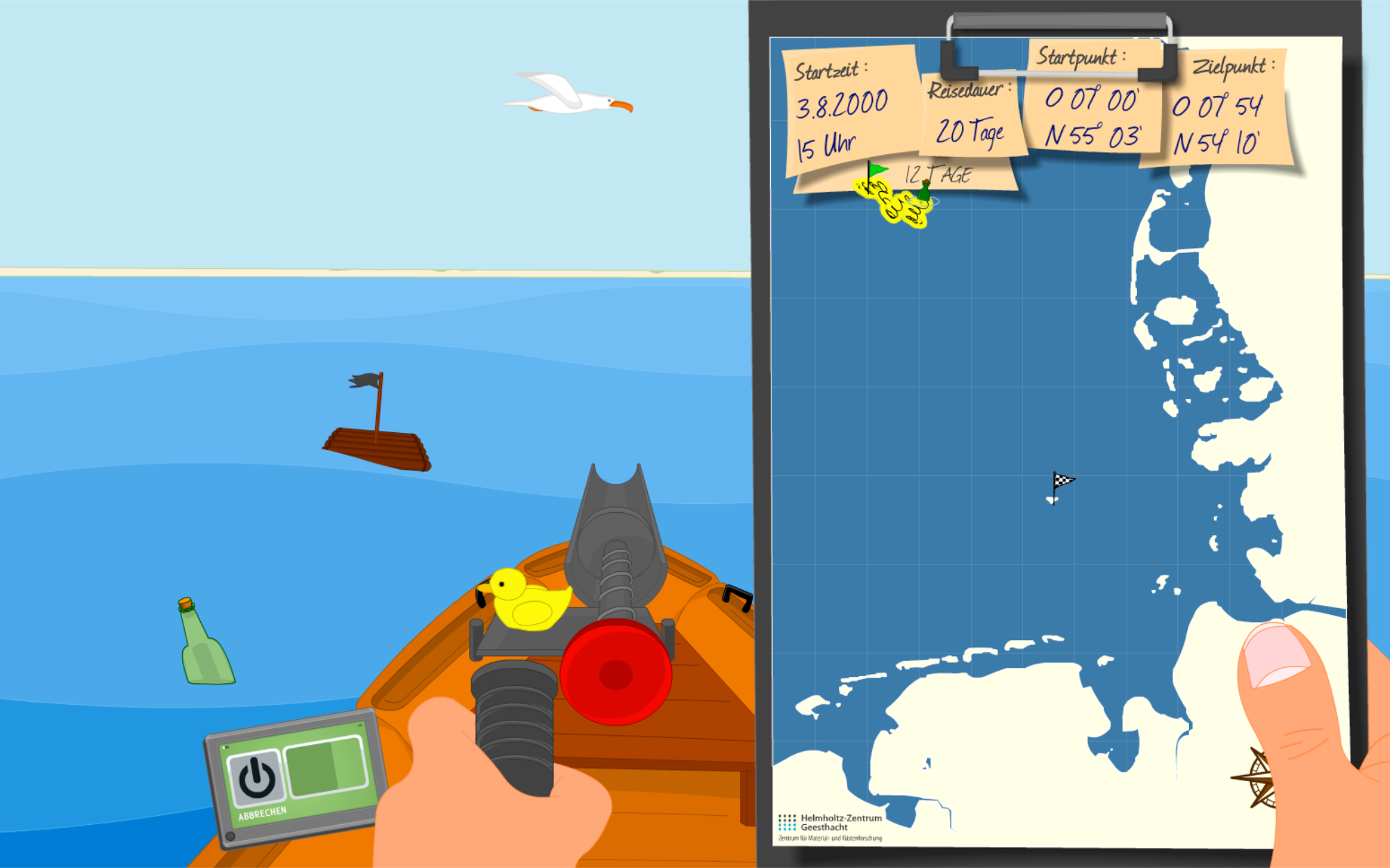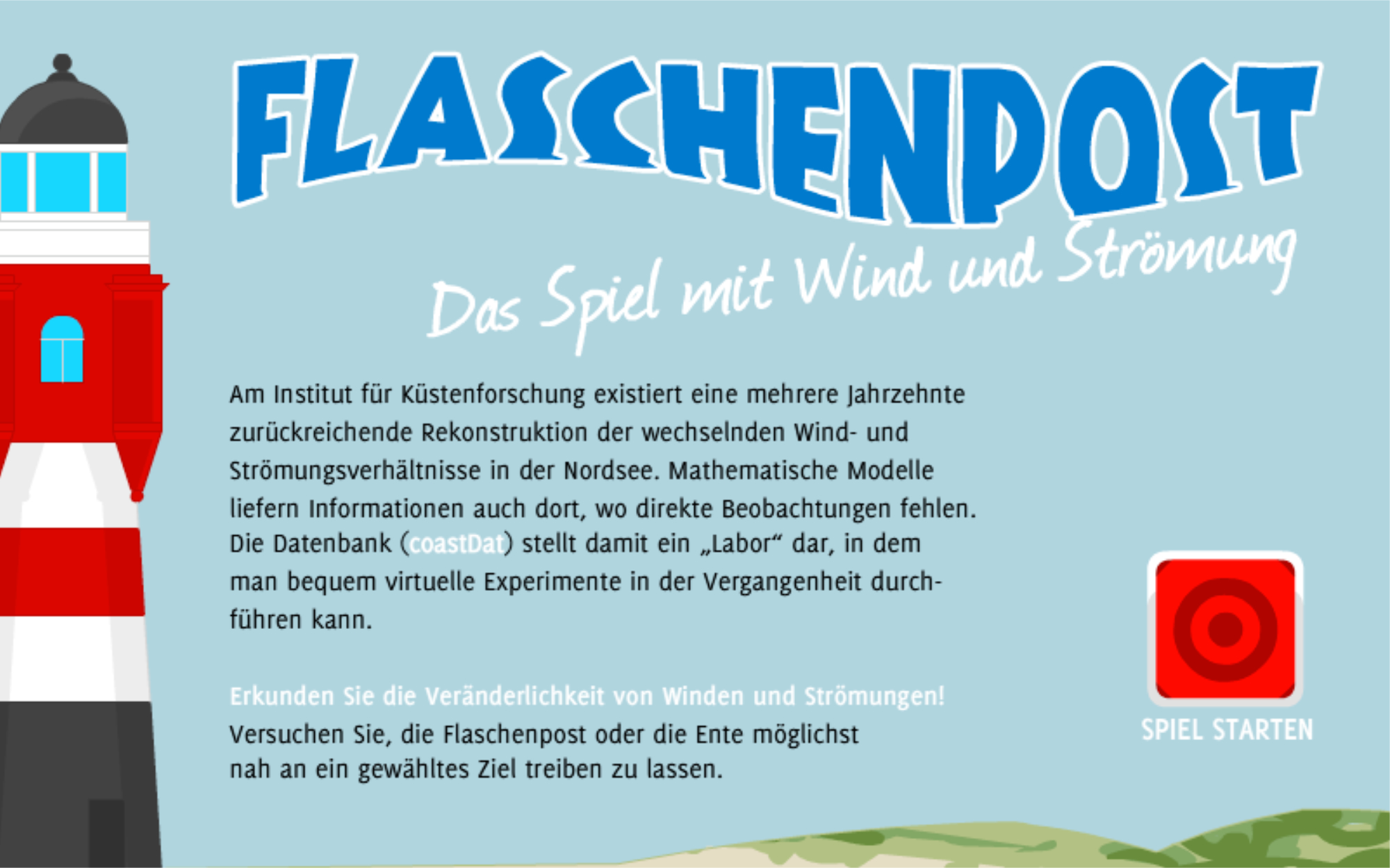The Helmholtz-Zentrum Hereon (HZH) uses an exciting science game to provide information about the results of the Institute for Coastal Research. With the help of measuring buoys, research vessels, observation satellites and radar systems, scientists at the HZH have been recording the flow velocity, water temperature and wave height of the North Sea, among other things, for over 40 years. This and other measurement data is analyzed in order to develop computer models that show the ocean currents in the past, today and in the future. This makes it possible, for example, to determine which coastal areas need to be protected most urgently in the event of an oil spill, how future storm surges could affect them - or where a message in a bottle thrown into the water at any point in the North Sea will drift.







